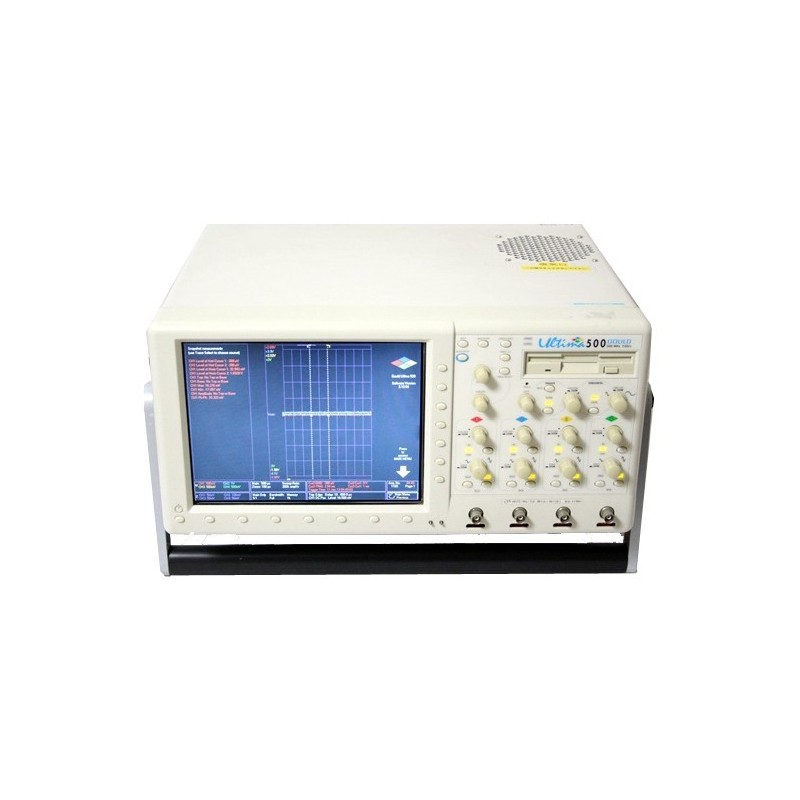










Ultima - die erste DSO-Workstation
Der ULTIMA 500 integriert in einem Gehäuse ein schnelles Hochleistungs-DSO und einen modernen Windows-PC. Dadurch ensteht die erste „DSO-Workstation“.
Besonders hinsichtlich Bedienung, Analyse und Dokumentation und „Connectivity“ bietet diese enorme Vorteile gegenüber einem „normalen“ DSO.
Die Bedienug kann vollständig über die DSO-Frontplatte des ULTIMA 500 oder aber mit Tastatur und Maus im „Windows-Stil“ erfolgen. Komplette Fernbedienung mit Echtzeit-Signalanzeige ist über ein lokales Netzwerk möglich.
Die integrierten Analysefunktionen lassen sich durch Nutzung von PC-Software wie ProView oder ImPRESSion von Gould Nicolet oder auch Fremd-Software wie DIADEM, MATLAB oder LABVIEW erweitern. Dokumentation kann per Cut & Paste der Daten oder Bildschirme direkt mit EXCEL oder WORD.
Der PC im ULTIMA bietet zur Kommunikation eine komplette Schnittstellenausstattung bis hin zu USB und Ethernet und ermöglicht damit nicht nur die Nutzung von Windows-Peripherie wie Monitor, Drucker oder Maus sondern auch die Vernetzung im Netzwerk oder den Email- oder Fax-Versand auf Trigger hin.
Eckdaten:
Das „DSO“ im Ultima:
2 GS/s Abtastrate transient
25 GS/s Abtastrate ETS
Vier Kanäle
Hochauflösender Farbbildschirm 10,4“ SVGA 800x600
8 oder 12 Bit Auflösung
4 * 500 MS/s mit 12 Bit (oder 2 * 1 GS/s oder 1 * 2 GS/s)
2 MS/s Abtastrate im HighRes-Dithering Modus mit 12 Bit
200 kWorte oder 1MWort Speicher jeKanal
leistungsfähige TriggerTools
Speichersegmentierung
Kalibrierte Nullpunktunterdrückung
Leistungsfähige Mathematik mit FFT, Graphen und Histogrammen
Der „PC“ im Ultima:
Windows-PC mit Pentium Prozessor
Betriebssystem NT 4.0
Diskette und Festplatte
Schnittstellen:
Seriell, parallel, USB, Maus, Tastatur, externer Monitor, Sound, Ethernet
Optionen: LS120 Laufwerk und IEEE488
PC nutzbar für eigene Applikationen
2 freie PCI-Steckplätze für eigene Karten
Eigene Software installierbar
Die „DSO-Workstation“
Bedienung über DSO-Frontplatte, über Tastatur und Maus unter Windows oder remote über
Netzwerk
Analysefunktionen lassen sich mit externen Programmen erweitern
Cut & Paste mit MS-Office
DDE-Datentransfer mit anderen Programmen
Kommunikation über alle modernen Schnittstellen im Intranet und Internet
ActiveX / DCOM-Schnittstelle zur Kommunikation mit Programmen wie DIADEM, LABVIEW, HP-VEE
„Programmers Library“ zur Eigenprogrammierung unter VB und C++
„Interface Editor“ zum Anpassen der Menüs je nach Anwendung